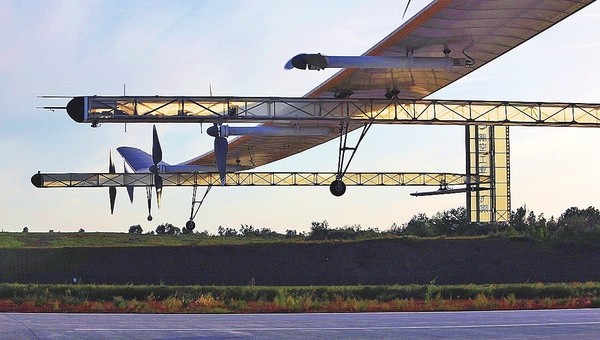Qimingxing-50, the largest solar-powered drone in China, has successfully completed its first test flight, according to CGTN's report.
Drones have been around for a while for both military and civilian uses. There are several ways to increase the drone's endurance, like adding more fuel or bigger battery packs. All of these techniques, meanwhile, are insignificant in comparison to the Sun's limitless power supply.
Hence, researchers have been developing solar-powered drones that can not only stay in the air for longer but also carry out various tasks while in the air.

Solar-Powered Drones
As noted by Interesting Engineering, drones that run on solar energy are made to be lightweight. The power-tapping solar panels may be mounted on enormous frames with two fuselages installed to fit inside them.
But since these frames are not weatherproof, the drones are flown in the stratosphere, where the probability of bad weather is quite low.
These drones can monitor a significant portion of the Earth while flying at the height of 12 miles (20 km), acting as a sort of mini-satellite. These drones can also carry out various tasks, such as geographic mapping, reconnaissance, communications, and environmental monitoring.
Read also: Drones on Mars: Skycopters May Be Exploring Mars Soon After Ground-Breaking Test in A Volcano!
Morning Star 50
The name Qimingxing-50, which means Morning Star 50 in English, has been given to China's solar-powered drone. The drone has been developing for a while and was created by the Aviation Industry Corporation of China (AVIC).
The first model of Morning Star, which measured 91 feet (28 meters) in width, was tested in China in 2018. The drone was made of carbon fiber-reinforced plastic and weighed only 41 pounds (18.9 kg).
According to the South China Morning Post, the Morning Star 50 is significantly bigger and has a wingspan of 164 feet (50 m).
Additionally, the drone uses a twin-fuselage design and six propellers to fly. On Saturday, the seamless flight of Morning Star-50 began at an airport in Yulin City, Shaanxi province, northwest China, and ended at the same location 26 minutes later.
Officials told the local media that the inaugural flight was successful and that all flight systems had performed normally. This makes room for the solar-powered drone's potential future flights, which may initially endure for several days or even months.
Meanwhile, Airbus has been testing its solar-powered Zephyr drones in the US for the past few years. With a 64-day flight streak, its most recent model, the Zephyr S, nearly broke the record for the longest nonstop flight.
However, the plane crashed and landed in Arizona just hours before breaking a record.
It is worth noting that the Zephyr S has a wingspan of 82 feet (25 meters), while the Morning Star has a wingspan of 50 meters.
Related Article : 'Solar-Powered Aircraft': Airbus' Unmanned Zephyr S Has Been Flying From Arizona to Belize For More Than 17 Days!
This article is owned by Tech Times
Written by Joaquin Victor Tacla
ⓒ 2025 TECHTIMES.com All rights reserved. Do not reproduce without permission.




